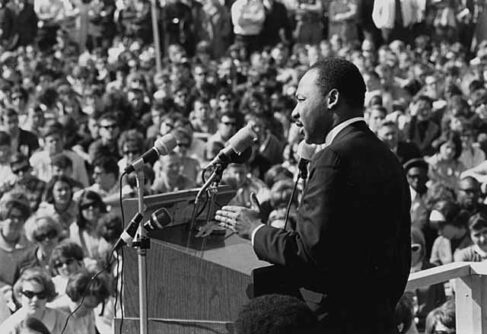Too many donors place their trust in university leaders with a preference for unrestricted dollars, who ask donors to invest millions without the benefit of independent advice or oversight.
Following this spring’s allegation that the Koch Brothers used donations to secure undue influence over professorial appointments, scare stories of donor overreach have dominated higher education headlines. Critics say philanthropists are getting too much for their money—and academic freedom is paying the price.
But as it turns out, most of higher education’s benefactors fall on the opposite side of the spectrum: gifts are handed over to institutions with few strings attached. Savvy entrepreneurs and executives who built fortunes by paying close attention to the details fork over millions with little consideration for how their funds might eventually be used. Conservative billionaire Jon Huntsman’s $120 million gift to the University of Utah was among the many to wind up in litigation in recent years, when college spending flouted a donor’s intent.
According to the “Philanthropy 50,” at least 15 of the nation’s largest donors made unrestricted gifts topping $1 million in 2017—and at least eight of these were unrestricted gifts that topped $10 million. Last October, aviation entrepreneur Kenneth Ricci committed to give the University of Notre Dame $100 million of unrestricted funds; the same month, the University of Oregon announced it had received a $50 million unrestricted gift from an anonymous donor. In July, MIT announced a $140 million pledge of unrestricted funds, also from an anonymous donor.
It would seem that many donors place their trust in the fox guarding the henhouse: university leaders with a preference for unrestricted dollars, who ask donors to invest millions without the benefit of independent advice or oversight.
Those who are contemplating following the lead of these examples might consider the case of frugal University of New Hampshire librarian Robert Morin, who left $4 million upon his death to the institution where he worked for half a century. Morin earmarked just $100,000 of his gift for the library and library science scholarships – trusting the university to use the rest of his gift wisely. University leaders, in turn, spent some $1 million of his estate on a video scoreboard for its football stadium. Morin, reportedly, never attended a game.
Some might say that the New Hampshire case is an egregious exception and that there are excellent reasons to give unrestricted gifts. According to this school of thought, donors should trust a university’s leadership to further a school’s mission—unrestricted gifts allow university leaders to respond to unforeseen opportunities.
But college presidents and campus leaders have priorities and interests that lead them down a path toward expediency when it comes to allocating philanthropic dollars, and may put them at odds with not just donors—but their institution's educational mission.
Philanthropic insiders sum up college priorities using the “four Rs of university fundraising” – Rankings, Real estate, Rah of college sports, and Research. Yet, while these Rs are often coveted by university leaders, they do little to strengthen the university’s mission to serve students.
Rankings are boosted by many factors—including an institution’s reputation—that have little do with an objective evaluation of academic offerings. Campus administrators’ desire to drive up applications encourages them to spend donors’ gifts on frivolous amenities like lazy rivers and gourmet dining facilities, which attract high school seniors but distract enrollees from their academic studies.
Real estate, in the form of glamourous new buildings, is enticing to university presidents who can proudly point to a legacy of campus expansion, but many classrooms stand empty on Fridays and are poorly utilized before 10 a.m. or after 2 p.m on any given day.
The use of a librarian’s bequest for a scoreboard illustrates the outsized role of athletics on campus: In 2015, colleges raised $1.2 billion in donations for athletics alone. Research is indeed a worthy object of philanthropy, but it often stands remote from the undergraduate experience that most donors have in mind.
Donors who are contemplating an unrestricted gift would do well to pause and consider whether they are willing to pour their largess into one of these four “R” priorities. For many, the answer will be “no.”
Philanthropists who are wary of trusting college leaders with unrestricted gifts can place themselves in the company of Andrew Carnegie. One of America’s greatest philanthropists and supporters of higher education, Carnegie was a great critic of unrestricted giving and reportedly once said that it’s more difficult to give money away intelligently than to earn it.
Instead of giving unrestricted gifts, donors with clear aims for their gifts should be prepared to work with university leaders to craft donations that align with donors’ values, aims, and wishes as fiduciaries acting on behalf of students and society.
A former college professor, Jacqueline Pfeffer Merrill is the executive director of the Fund for Academic Renewal, a nonprofit that advises university donors.






